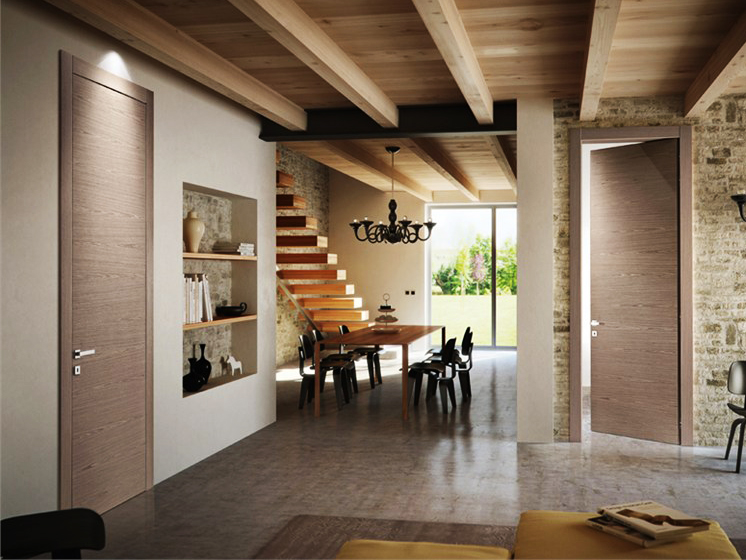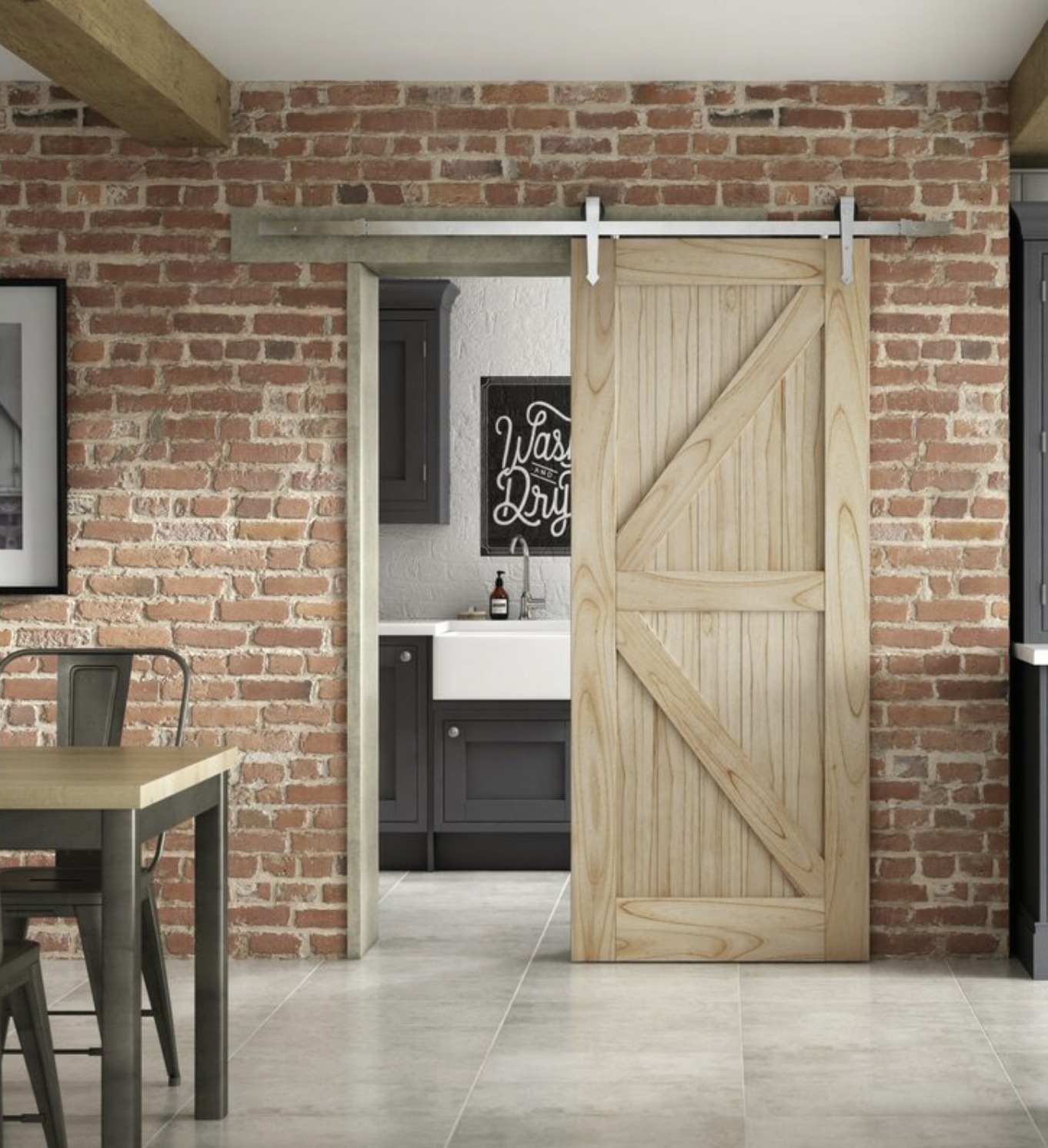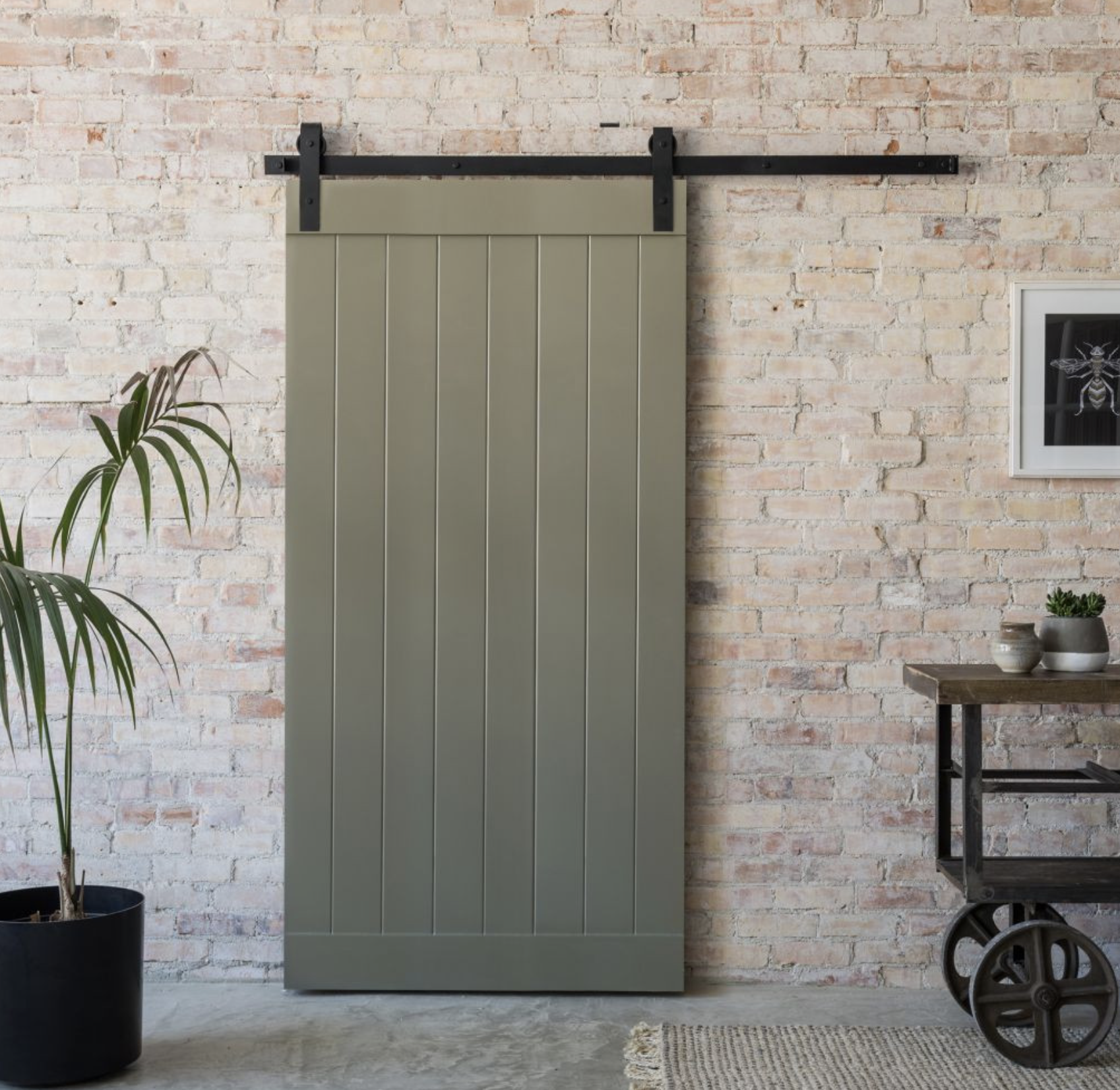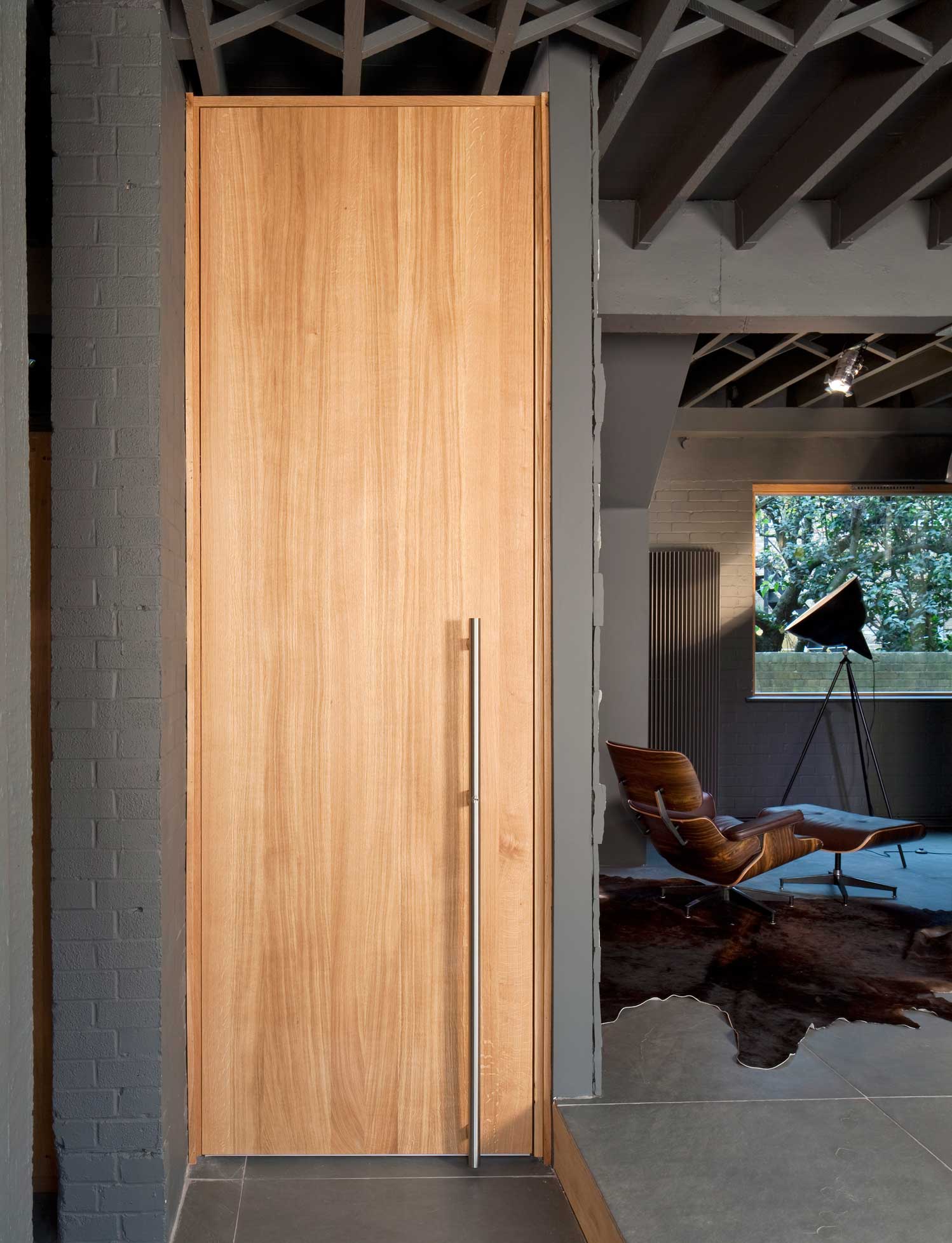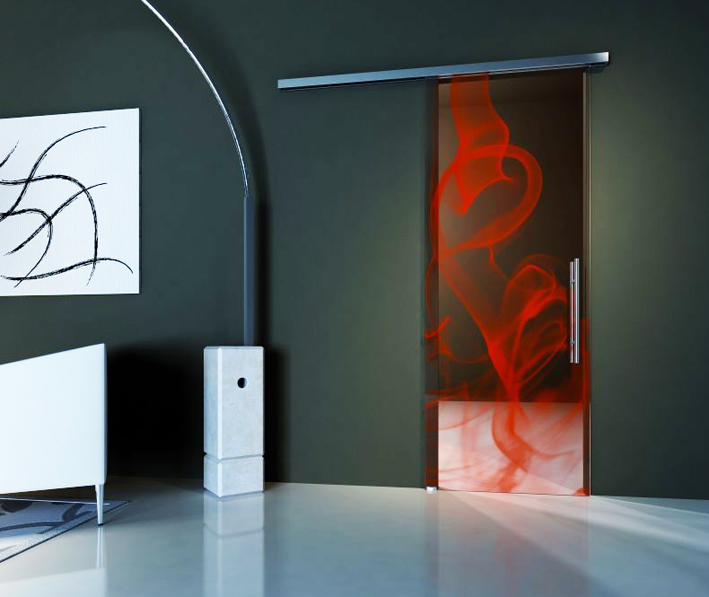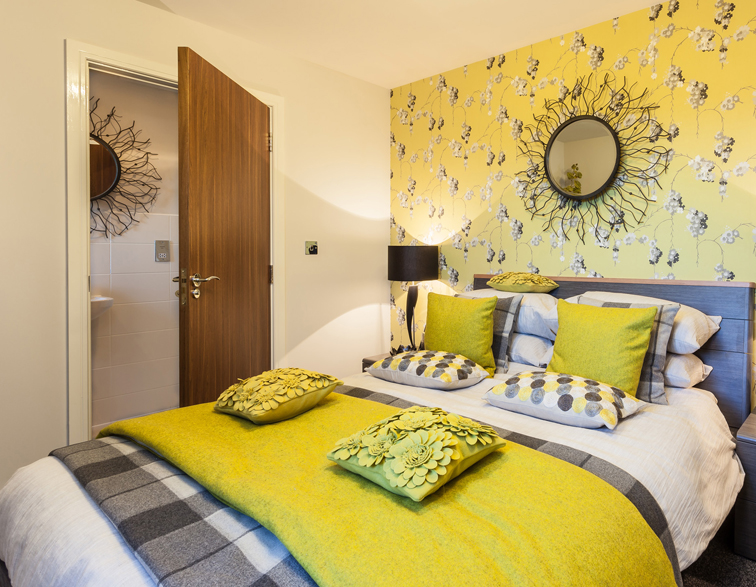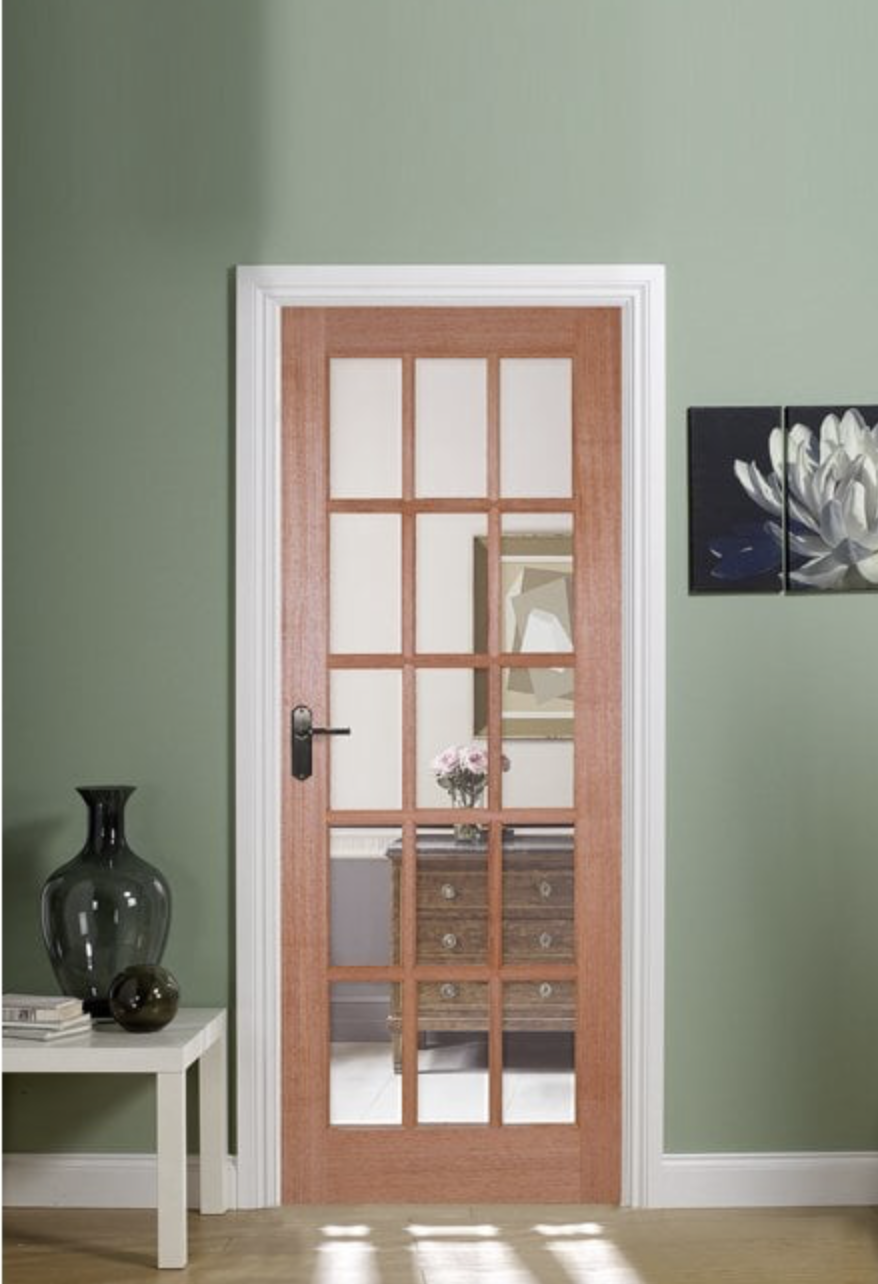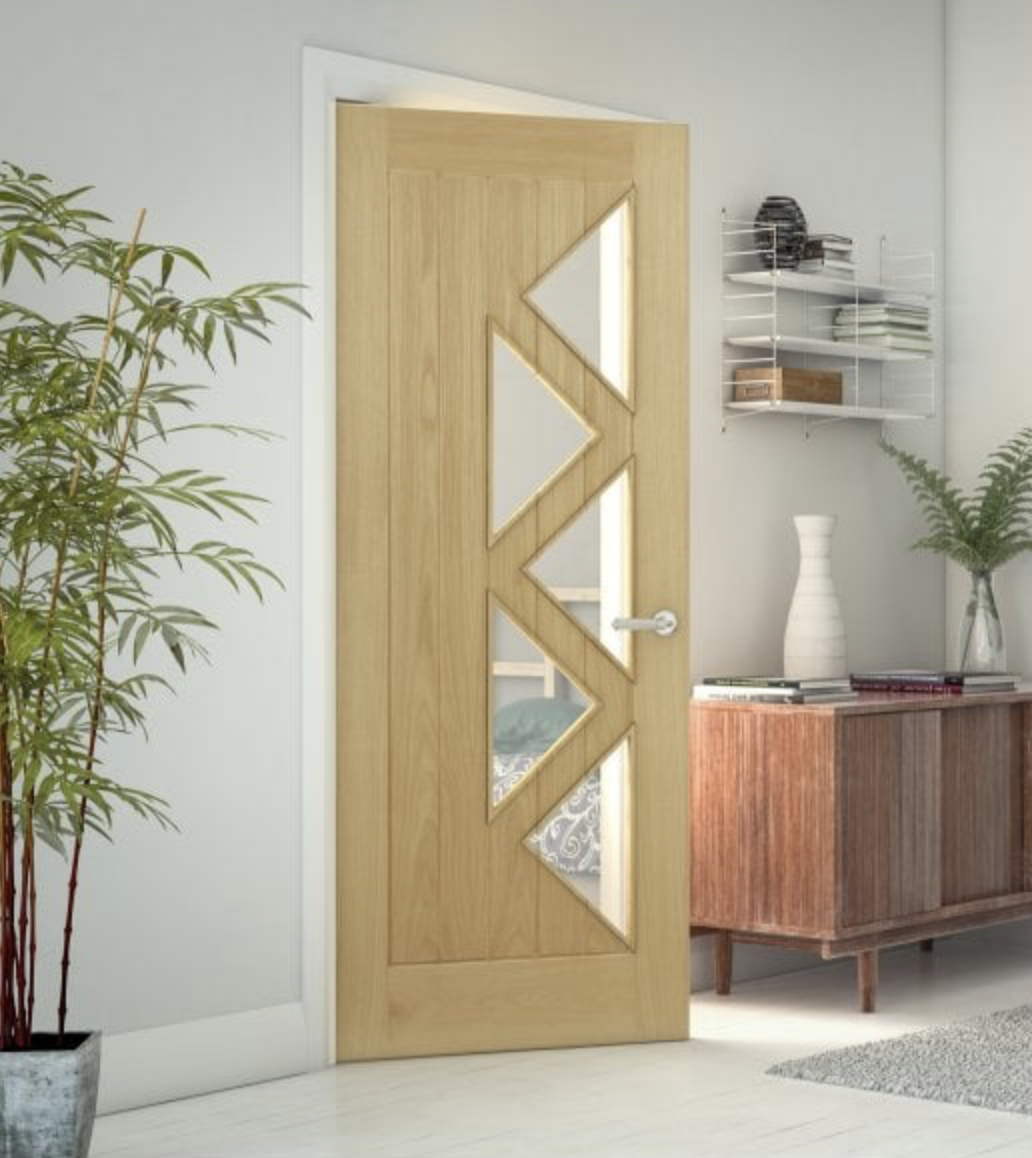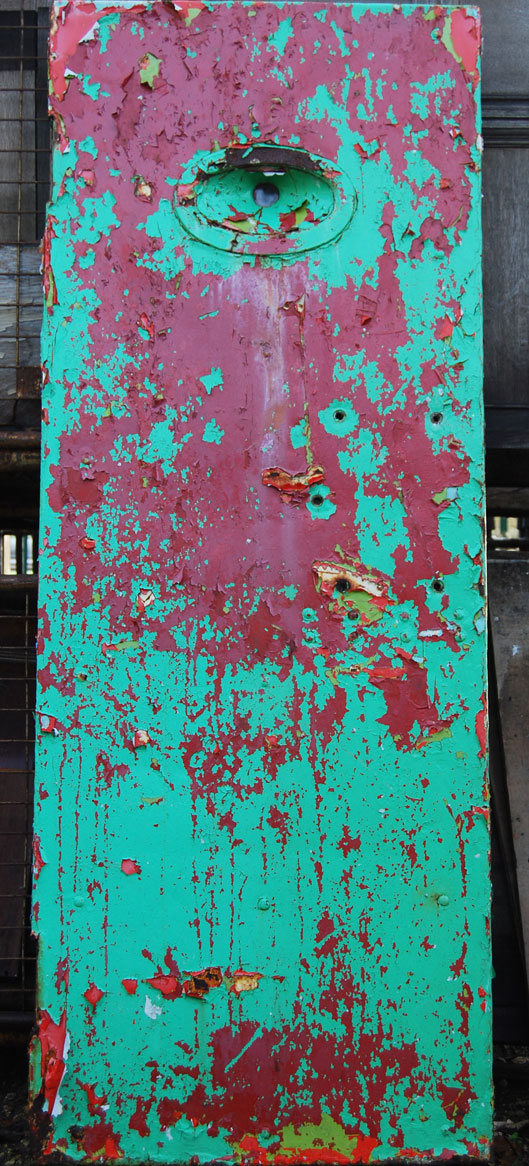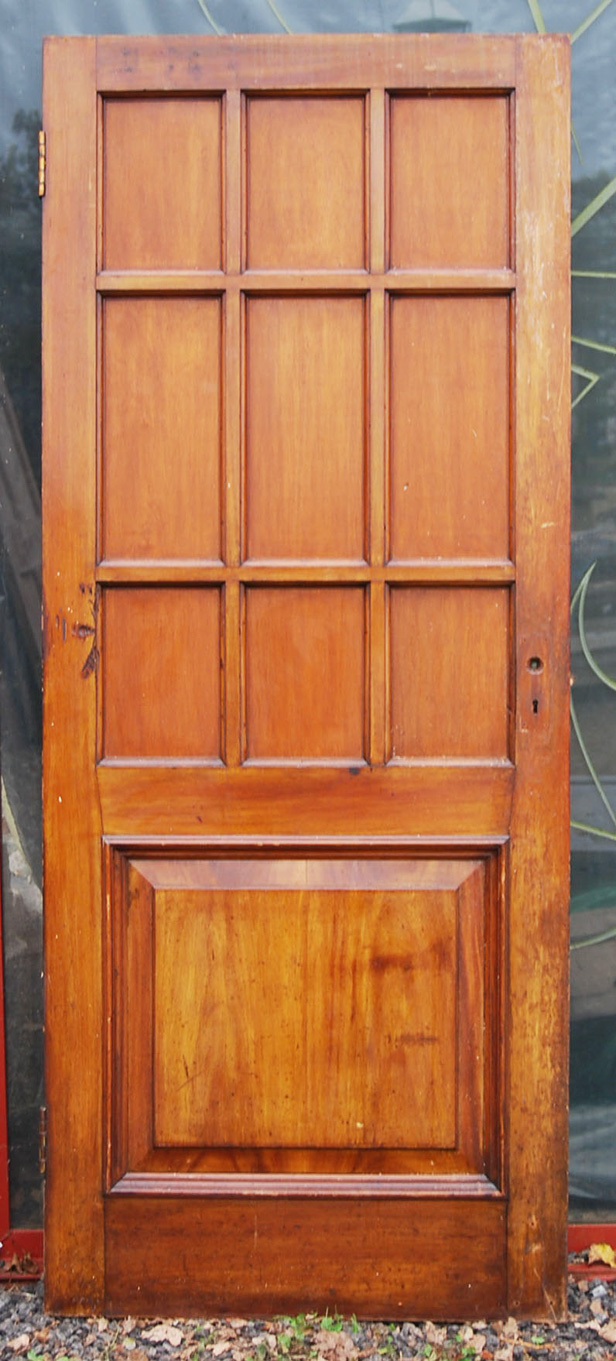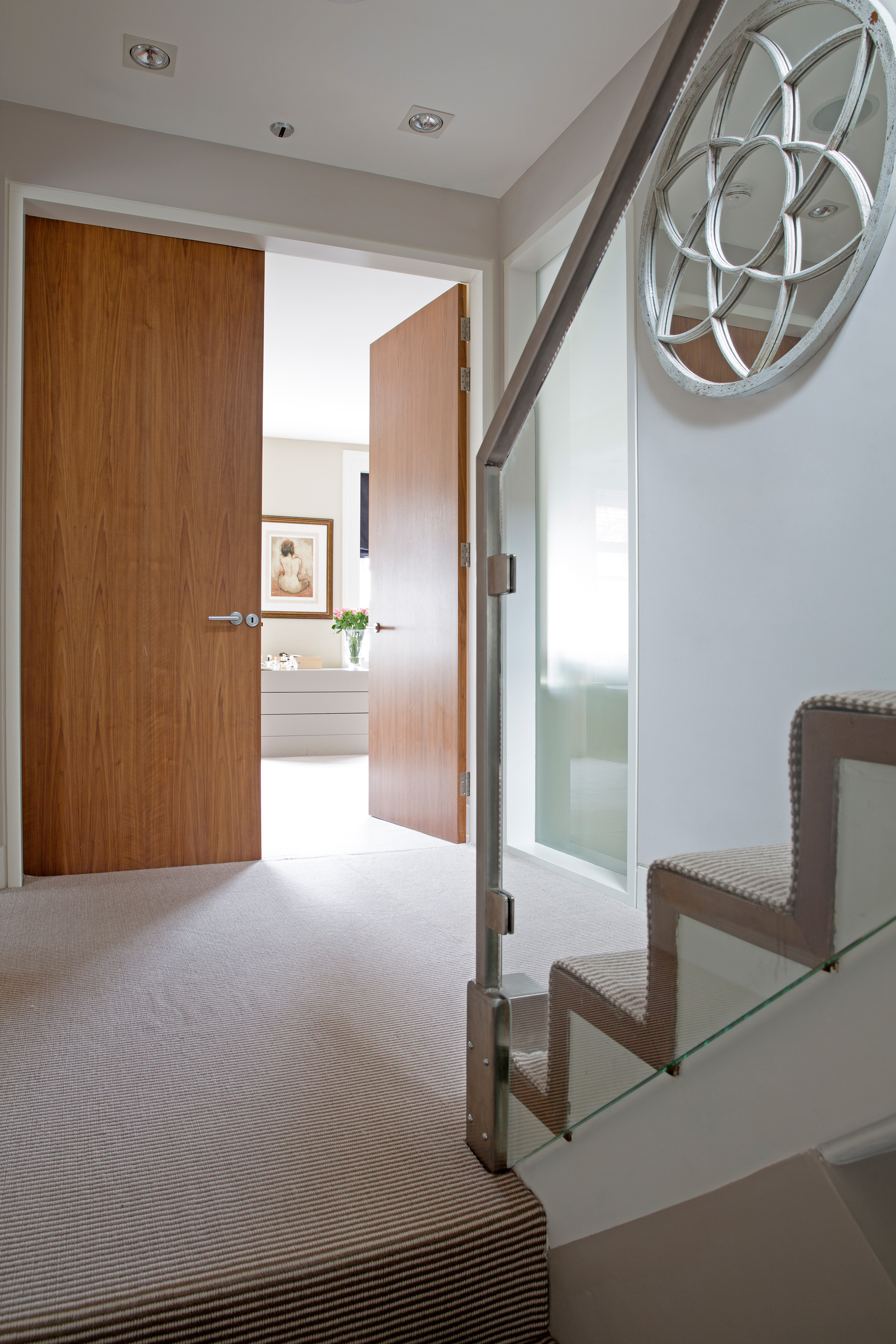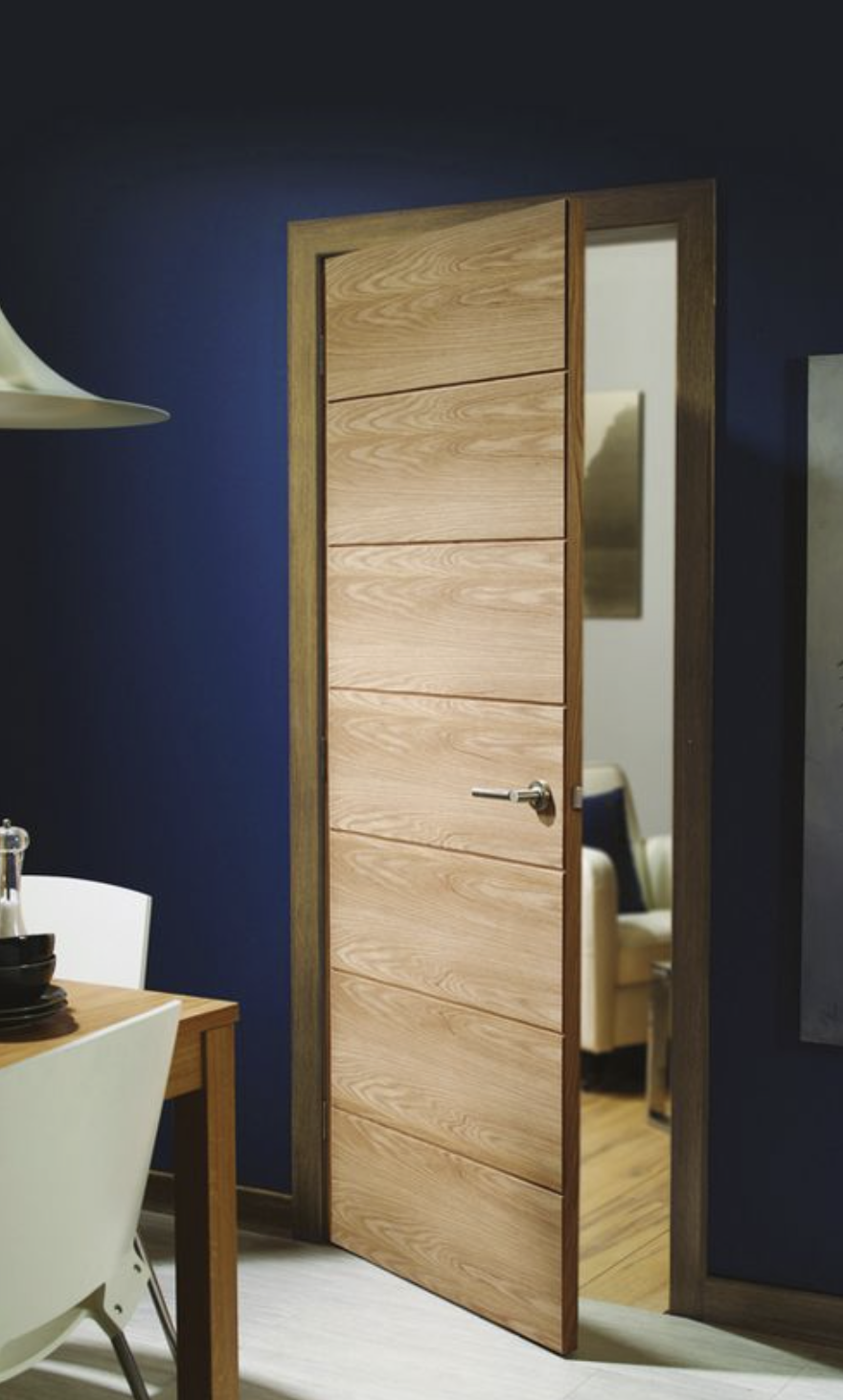Are you bored with your doors?
Doors are easily overlooked and we tend meekly to accept what we inherit when we move into a property. But stylish interior doors can bring impact, cohesiveness and even a quiet grandeur to your home
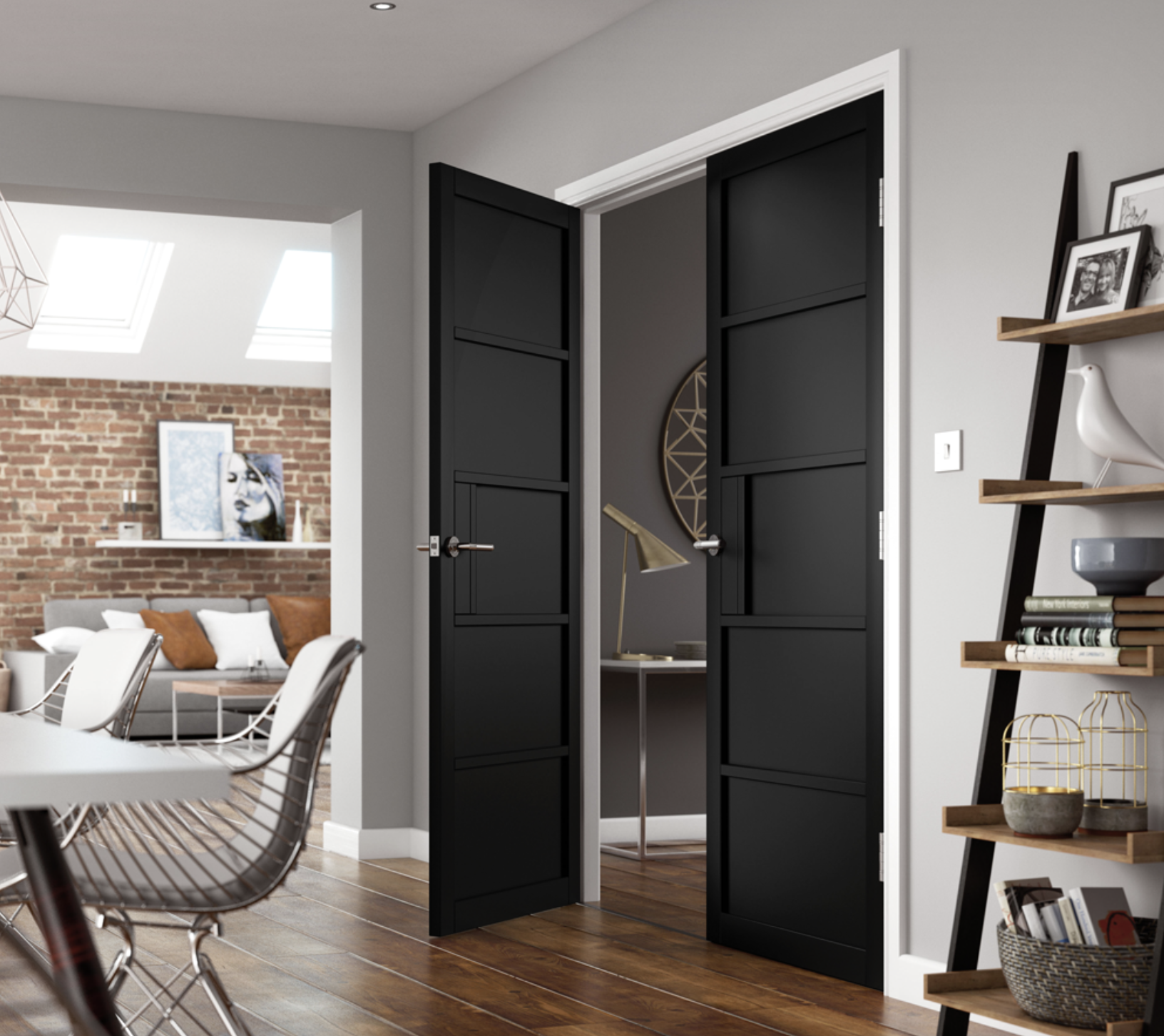
The stalwart Victorian wood panel doors are fine, especially if you have them expertly painted. But don't think you can't have contemporary internal doors just because you don't live in a modern building - glass, metal or textured wood veneered flat-fronted doors can look fabulous in older properties, giving them a breath of fresh air. Pictured above: double wood panel doors painted black look striking, from UK maker JB Kind. For eco-friendly doors, choose wood from sustainable forests, recyclable glass or steel/aluminium doors - the Crittall-style black framed doors and windows are proving very popular
Open-plan living can look extremely glamorous in print, but let’s face it, even the most die-hard minimalist only needs one child learning to play the violin to be convinced of the advantages of good doors.
Not only do they provide the obvious function of dividing up space into different functions, they also help with sound-proofing and insulation. And crucially doors set the tone of an interior, so to speak.. cheap flimsy doors ruin a room no matter how beautifully designed it is, while a room that's otherwise nothing special can be enhanced by a well-designed door.
Because doors are a crucial element in good interior design, and something we should give a little more thought to - and be willing to spend more on.
Traditional Victorian panel doors were the norm in many houses but even traditional properties can suit updated doors, whether it's glass doors, or laterally slatted doors or sliding/pocket doors. You can spend a fortune - Urban Front do fantastic doors - but you can find good design from companies such as Maverick Doors, which offers an online design feature. Its Sedgewick door (a set costs £399) is a good choice for many types of home. Minimalist and elegant, it has four distinctive panels, and can be made to your specification with customised colour and ironmongery. Doors can be delivered ready painted.
Elizabeth Assaf, designer at Bucks-based Urban Front, which makes to order high end real wood veneer doors, says the feel of a door is very important: 'Cheap doors with a honeycomb interior are very light and don’t feel substantial enough when you touch them. We can do really big feature doors - up to 3m high and 1.2m wide - which people love because they give a sense of grandeur, while the natural timber is beautiful.'
In fact, if you're a design junky you'll have noticed that doors are getting becoming a more prominent feature in interior design, with over-height, double and even flush-to-ceiling doors becoming popular.
Tina Jones at leading Derbyshire door manufacturer JB Kind (which uses FSC-certified woods) urges people not to shy away from choosing a distinctive door because doors are beautiful things that should be noticed. 'Doors can make a strong design statement,' she says, 'and we're finding that people are increasingly realising that taking the time to choose the right door makes all the difference to their home.'
And she suggests if you've been in your property for a few years and start to feel a bit bored by it, investing in new doors could be the answer - assuming you've been at best indifferent to the ones you've been living with: 'They can make a really refreshing change.'
London interior designer Paul Warren says his eye is drawn to the doors in a property the minute he steps inside: 'The first thing I want to have removed from a house are cheap flimsy doors..and if people say they want their home to look smart and feel sturdy, I tell them they're going to have to invest in good doors.
'I love the contemporary look you get from large flat-fronted doors faced with interesting wood veneers, but I'm increasingly suggesting to clients they they have frosted glass doors for bathrooms - they're modern, they let the light in, and they look stunning. For me it's glass or wood... wood is sustainable and glass is recyclable. And for period houses, reclaimed/salvaged doors can be the answer if you don't mind the work involved in restoring them.
But if you haven't got an interior designer to call on, here's the Deco round-up of the main types of doors and their environmental impact.
Artificial veneers
Many doors in the cheaper price range may look like wood from a distance, but turn out to be 'foil' or a photographic wood finish on a man-made veneer. This may be put on top of a lightweight structure containing a honeycomb of cardboard. They are hard to cut to fit so suit only regular sized doorways. For example, oak foil doors from doorsontime.com cost from £22.
Environmental impact: The top layer on a foil/laminate door can be made of various materials, including papers and plastics. It's not particularly hard-wearing so is prone to damage and is difficult to repair, meaning it will probably need replacing in a shorter time than other types of door. The central honeycomb core is a thick paper, so is biodegradable and renewable, while the lightness of the door means less fuel is involved in transporting it. However it requires quite a lot of energy during manufacture.
Moulded doors
These look like traditional wood panelled doors but are actually made from MDF, fibreboard or similar type product made from wood shavings mixed with resins. There is usually a solid wooden frame inside, while some moulded doors have a honeycomb cardboard core or a core of solid insulating material. They come either primed and ready to paint or fully finished. It's usually possible to trim a certain amount off the door, top and bottom, to make it fit, though it will then need to be re-primed on the sawn edges before painting. Moulded doors start from just £19 at wickes.co.uk
Environmental impact: Moulded doors vary hugely in their environmental impact and it isn’t always easy to find out the technical information. It's possible to make both the wooden frames and the moulded fibreboard from FSC-certified timber, ensuring that the wood is legal and sustainable – and indeed this is now standard from many companies, such as Travis Perkins and Howdens. You can also possible to get fibreboard/MDF which has no urea-formaldehyde or other VOCs, and to have a moulded door that is painted in a water-based paint, but these are harder to find and you will have to read technical specifications carefully to reassure yourself.
Softwood
Woods such as pine can be used to make fairly modestly priced doors, either engineered with a layer of pine over an mdf or hardwood core, or as doors made from solid planks. Solid doors are much easier to cut to fit than engineered ones, although they are much more likely to suffer from warping and bowing. They are suitable for oiling, varnishing or painting. For example, four panel, unfinished pine doors are £36 at laveronline.co.uk
Environmental impact: Softwoods such as pine are usually plantation-grown so are sustainable, although FSC certification guarantees it, and solid wood or engineered wood doors are naturally bio-degradable providing they aren’t smothered with acrylic paint. Using a water-based varnish or natural oil is the most eco-friendly finish.
uPVC
uPVC internal doors are given an artificial grain to look like painted wood, but they require no maintenance other than an occasional wipe down. For example, uPVC internal doors from www.we-do-doors.co.uk cost from £118 and can be specified in 200 different colours. uPVC doors can be cut to fit relatively easily.
Environmental impact: Tough and long-lasting, but uPVC is a plastic, the manufacture of which is dependent on non-renewable oil resources. It also contains toxins so presents an environmental danger during its manufacture and possibly leaches toxins if it ends up in landfill. It does not biodegrade, although it can be recycled.
Hardwood Veneer
Engineered doors using real timber veneer can give all the good looks of a solid wood door without the risk of warping, and they come in at a variety of price points. For example, Swindon-based Vicaima, (vicaima.com) offers its Naturdor range featuring FSC-certified real wood veneers in seven finishes from £100, while at Urban Front, (urbanfront.co.uk) a layer of real wood covers a core made from recycled wood which is designed to be highly insulating and soundproofed. Useful if you have that child with the violin. Another company offering engineered doors is Italian firm Pivato Porte (pivatoporte.com) which guarantees that the wood for its veneers is grown locally in sustainable Italian forests.
Environmental impact: It's possible to specify that the wood is FSC-certified, and to ensure that it is treated with a natural oil or water-based lacquer. Biodegradability depends on what is used for the core of the door. Doors with thermal insulation properties help to save energy - if the heating is zoned, perhaps to heat the downstairs earlier in the evening than the upstairs, then thermal doors help to keep the heat in the right place.
Solid hardwood
A solid wood door gives a luxurious look and feel to a room. For example, German brand HGM (grauthoff.com) uses only sustainably grown timber from around the world, finished with eco-friendly water-based varnishes, and in a variety of styles from flat panels to more decorative designs. Its premium Massiv range is solid wood, or it also offers a range of natural wood laminate doors. HGM products come as doorsets, meaning that the door comes with the frame already attached. This makes fitting easier as the door cavity can be adjusted to fit the door frame, rather than trying to trim the door to suit the hole. If buying solid wood take advise from the manufacturer on how to avoid warping – proper sealing can help, as can allowing the door to acclimatise to the building for a few days before cutting it to fit.
Environmental impact: Providing that the wood is from sustainable, managed sources and treated with natural, water-based varnishes, solid wood doors are a good eco choice as they are fully biodegradable, extremely hard-wearing and relatively easy to repair if damaged.
Glass
Glass doors provide a strong visual impact and have the advantage of being opaque, translucent or transparent according to need and they can be etched or sandblasted. UK building regulations require that glass doors meet strict safety requirements, so a minimum of 4mm toughened glass is required, while certain laminated glass products are also acceptable. Prices depend on size and design but you probably need to think upwards of £400 for a standard width single door.
Environmental impact: Glass is made from natural minerals and can be recycled over again, including most forms of toughened and laminated glass. It is not as tough as some other materials, however, and is difficult to repair once damaged.
Metal
Various metals can be used for door construction, particularly aluminium and, at the very top end, decorative metals such as bronze.
Environmental impact: Metals can be recycled but do not biodegrade. They are extremely tough and hard-wearing, but are not so good for sound and temperature insulation.
Mix it up
Many manufacturers offer doors made from a wide variety of materials – Italian modern brand Albed, for example, has glass and aluminium, glass and wood and even, with its Trait door system, aluminium topped with stone or plaster finishes. These combinations offer huge design potential - but also make it harder to ensure the eco-friendliness of the product as some parts could be biodegradable and environmentally friendly while others are much less so. Recycling is also harder.
Salvage
Buying a used product is almost always a more eco-friendly choice than buying new, and doors are readily available as salvage. At Lassco, for example, you can find everything from simple wooden “cottage” doors up to intricately patterned steel and oak doors salvaged from an old prison. It’s worth remembering that doorways were often smaller in years gone by, and that even in new homes, door frames are often not perfectly shaped. 'Expect to buy a reclaimed door a little over your required size,' warns Tom Hart at Lassco’s Three Pigeons showroom. 'It can then be trimmed to fit, allowing for either the door or frame being off-square. And have a good look at the door on both sides and down the length of the stiles [the vertical framing timbers] to make sure the door is straight, as well as checking for rot and woodworm.'
Hart says the benefits of buying a reclaimed or antique door are the same 'as buying furniture of a similar age: quality timber, be it slow-grown Baltic pine or South American mahogany, good workmanship and design, and a ‘broken in’ look that sits well in period properties.'
For prices, contact the manufacturers, as many make to order and they'll need to know the dimensions of your doorways.


